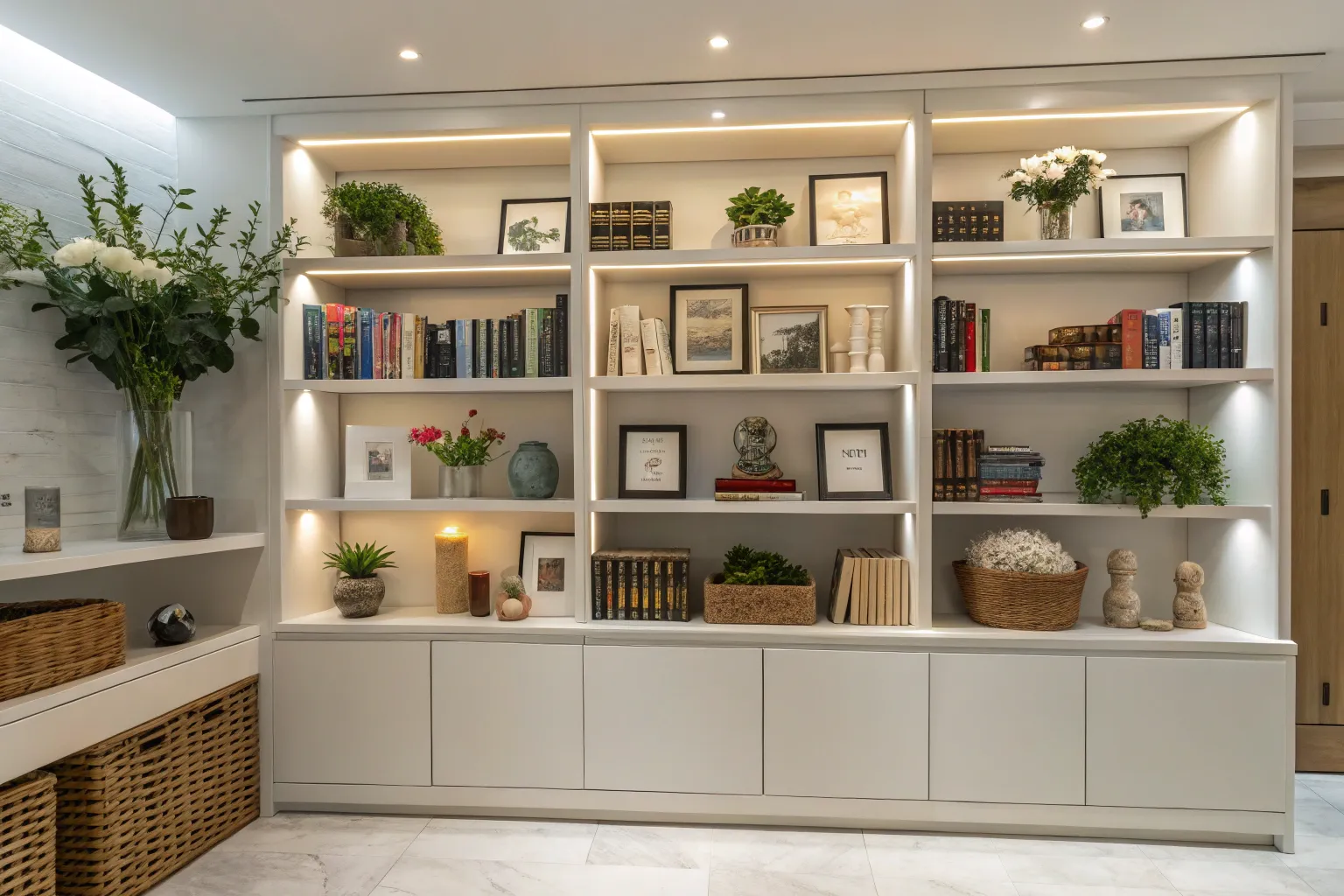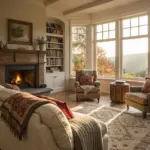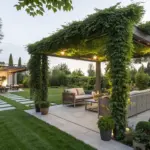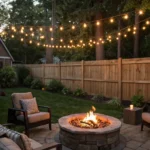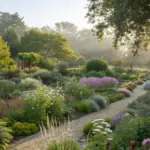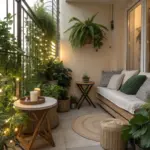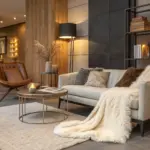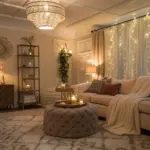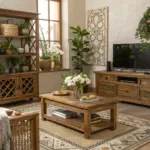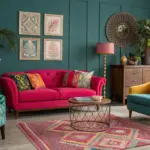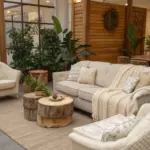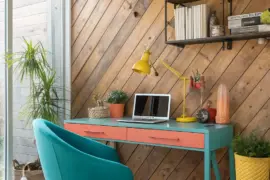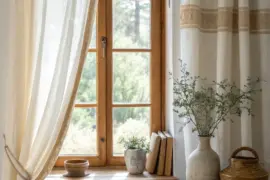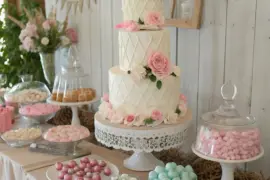Transforming a simple bookshelf into a curated display requires understanding both the science of visual perception and the practical needs of living spaces. I’ve spent years refining techniques that create harmony between functionality and aesthetics, discovering that the most successful shelf arrangements follow predictable patterns while feeling effortlessly personal.
Understanding Visual Weight and Balance
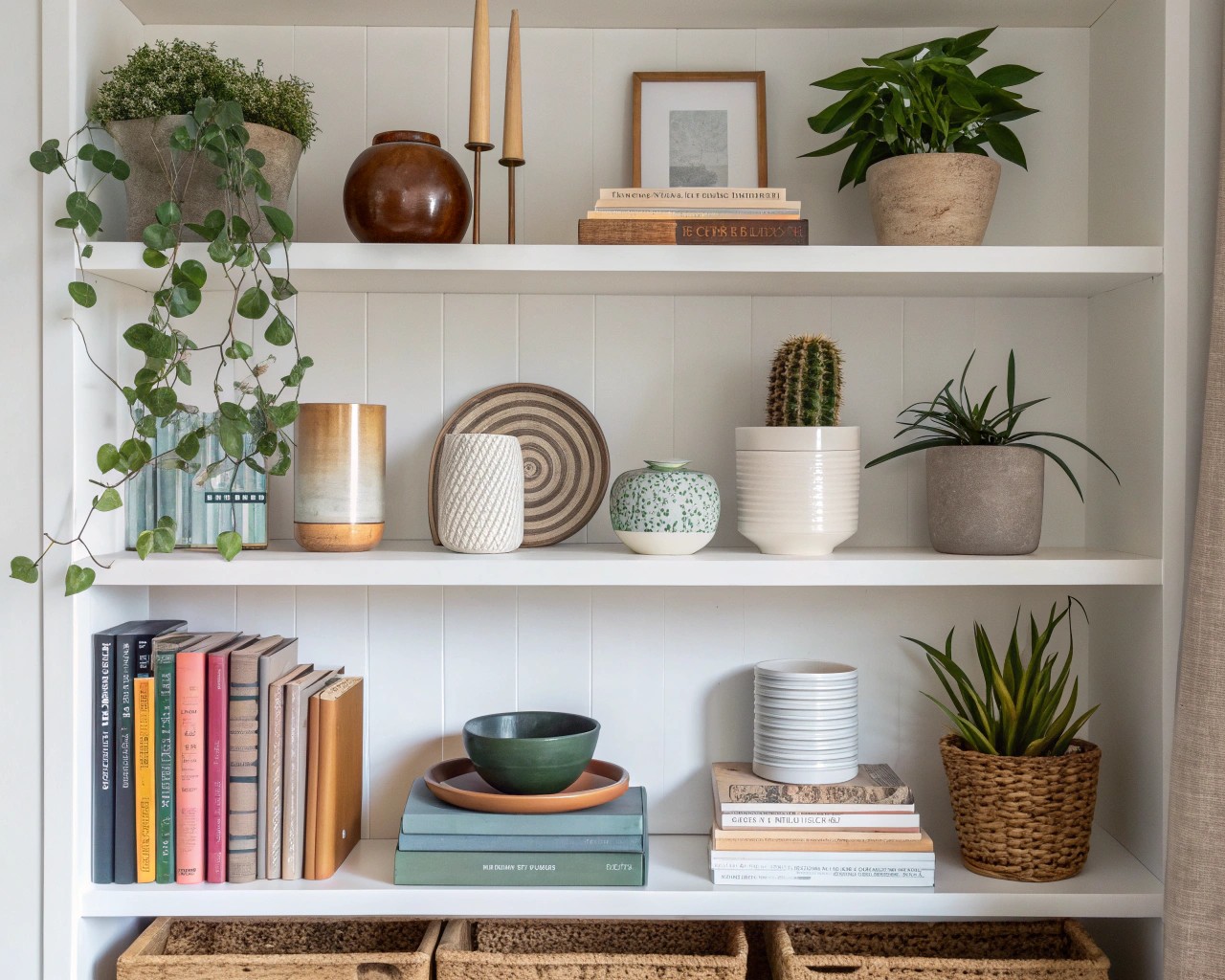
The foundation of successful shelf styling lies in mastering visual weight—the psychological heaviness an object conveys to the eye. Dark objects, large items, and dense textures carry more visual weight than light, small, or transparent pieces. When I arrange shelves, I mentally distribute this weight across horizontal and vertical planes, much like balancing a scale.
The triangle method provides an invaluable framework for creating stable arrangements. By positioning three objects of varying heights to form an invisible triangle, you create a composition that feels naturally balanced. Place your tallest item at the triangle’s apex, with two shorter pieces forming the base. This geometric approach works because our brains instinctively find odd-numbered groupings more pleasing than even arrangements.
Negative space—the empty areas between objects—proves equally important as the objects themselves. These breathing spaces prevent visual clutter and allow individual pieces to maintain their impact. I recommend leaving approximately 30-40% of each shelf empty, distributing this space unevenly to create organic rhythm rather than rigid gaps.
The Science of Plant Placement
Incorporating plants into shelf displays requires understanding both their biological needs and visual properties. Most houseplants suitable for shelving thrive in low to medium indirect light, making them perfect companions for bookshelf environments that rarely receive direct sunlight.
Selecting Shelf-Appropriate Species
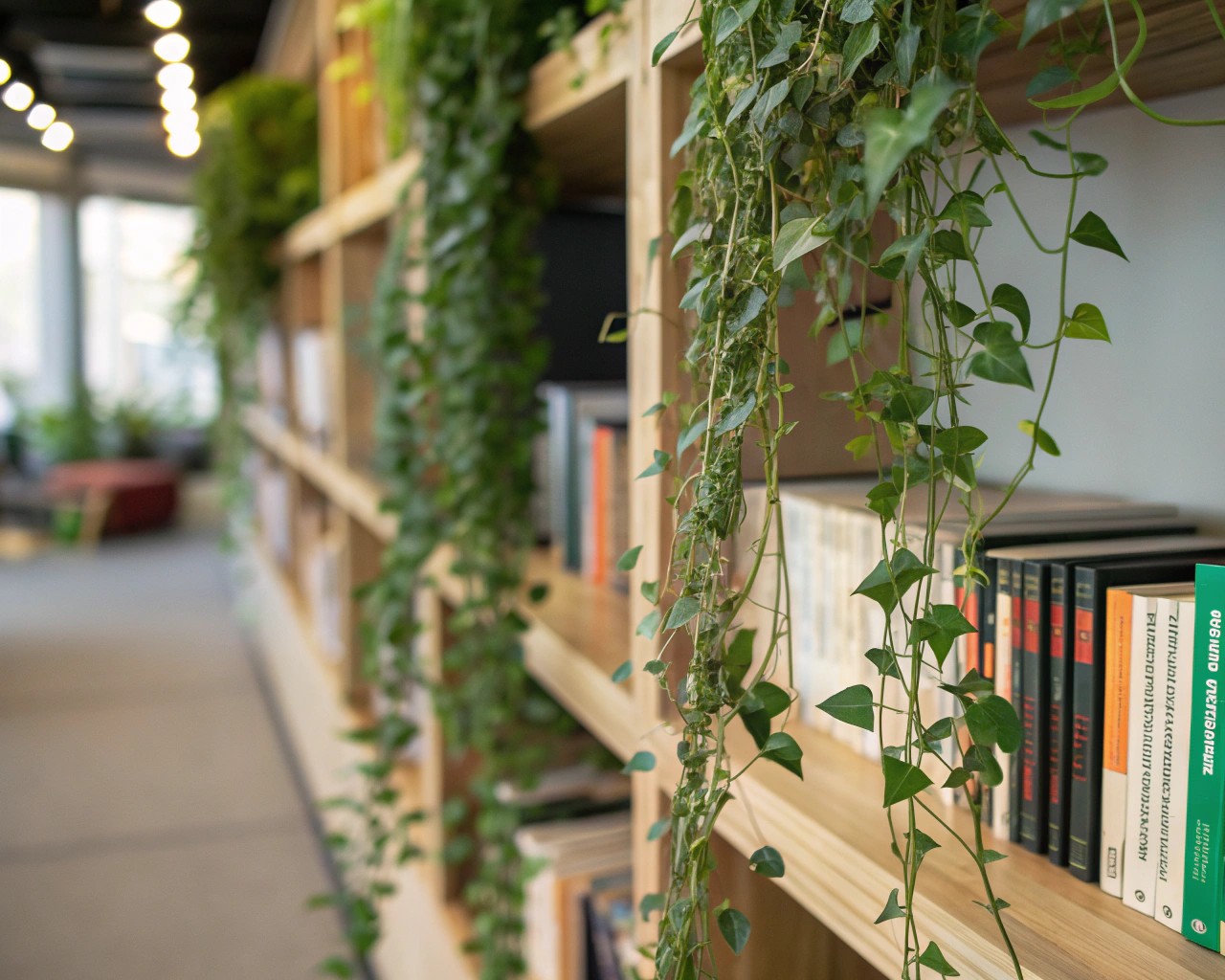
Trailing varieties like pothos, philodendron, and string of hearts create elegant cascades that soften hard shelf edges. These species tolerate the lower light conditions typically found on shelves and require minimal maintenance. Position trailing plants on upper shelves to maximize their dramatic downward growth pattern.
Upright specimens such as ZZ plants, snake plants, and Chinese evergreens provide vertical interest and anchor arrangements. Their structured forms contrast beautifully with flowing vines, creating visual tension that keeps displays engaging.
Essential Plant Care Protocols
- Rotation schedule: Turn plants one-quarter rotation every 3-4 days to ensure even growth and prevent lopsided development
- Drainage management: Always use saucers or waterproof trays to protect books and shelving from water damage
- Humidity considerations: Group plants together to create beneficial microclimates, as their collective transpiration increases local humidity
- Accessibility planning: Position frequently watered plants within easy reach, considering your watering routine when determining placement
Book Arrangement Techniques
Books serve as both functional storage and decorative elements, offering unique styling opportunities through varied positioning and grouping strategies.
Horizontal and Vertical Combinations
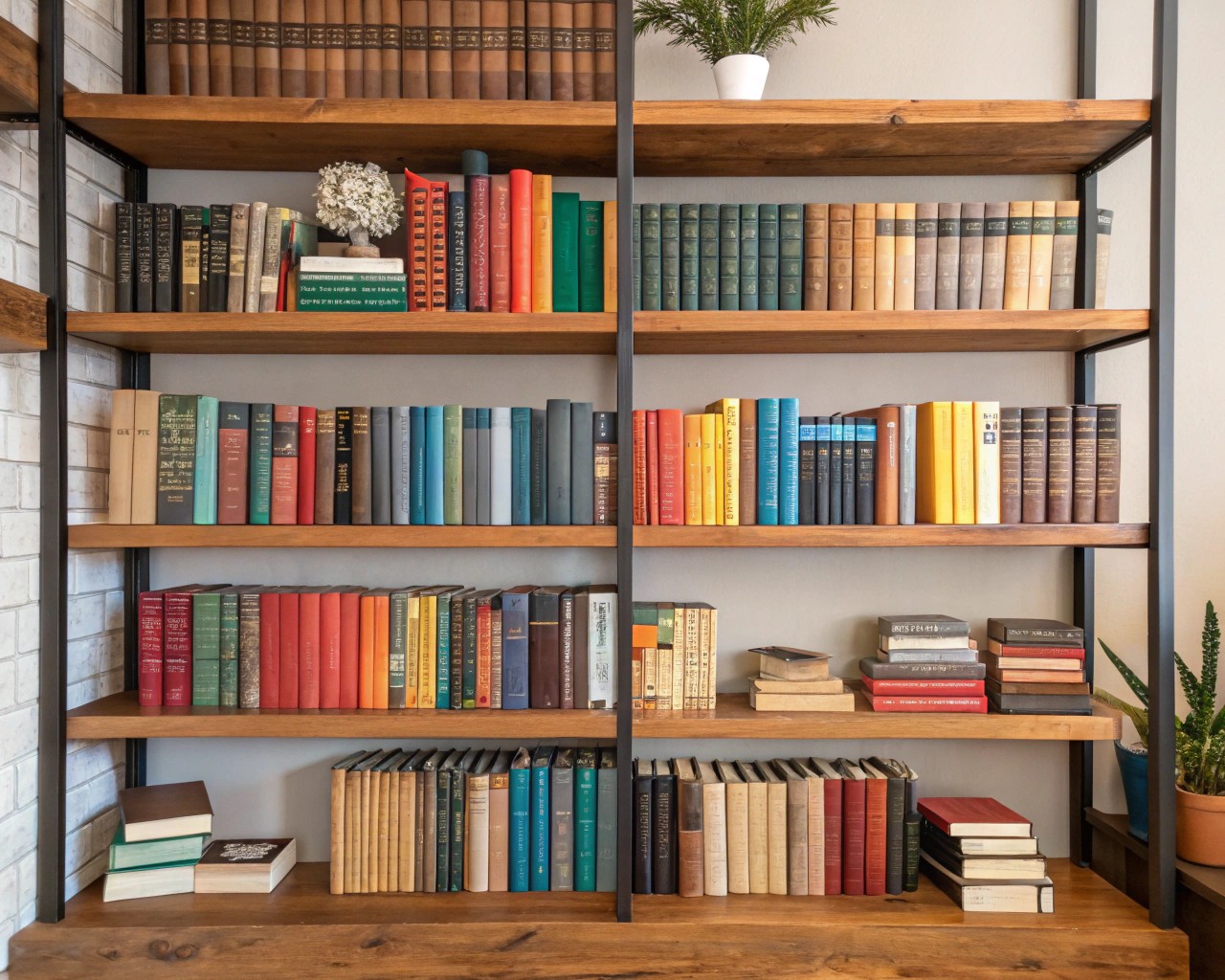
Vary your stacking patterns to create visual rhythm across shelves. Alternate between vertical arrangements and horizontal stacks, using the latter as platforms for decorative objects. This technique breaks up monotonous lines while providing natural height variations for accessories.
Size graduation within stacks creates more sophisticated arrangements. Place larger books at the bottom of horizontal stacks, graduating to smaller volumes on top. For vertical arrangements, group similar heights together with occasional variation to prevent rigid uniformity.
Color Coordination Strategies
Consider organizing books by color to create cohesive visual flow. This technique transforms utilitarian storage into intentional design elements, though it may compromise accessibility for frequent readers. Alternatively, remove dust jackets to reveal more consistent binding colors.
Strategic book reversal—turning select volumes spine-inward to show page edges—can reduce color chaos while adding textural interest. Use this technique sparingly, reserving it for books that contribute unwanted color disruption to your palette.
Creating Cohesive Color Palettes
Successful shelf styling relies on limited color schemes that unify diverse objects. I typically work with 2-3 main colors plus neutrals, distributing these hues diagonally across the display to create visual continuity.
Neutral Foundation Strategy
Begin with a neutral base comprising whites, creams, natural wood tones, and soft grays. These foundational colors provide visual rest areas that prevent overwhelming the eye. Approximately 60-70% of your display should consist of neutral elements.
Add accent colors sparingly—no more than 20-30% of your total palette. Whether you choose deep greens from plants, warm terracotta from ceramics, or rich blues from book spines, distribute these pops throughout the arrangement rather than clustering them in single locations.
Material and Texture Integration
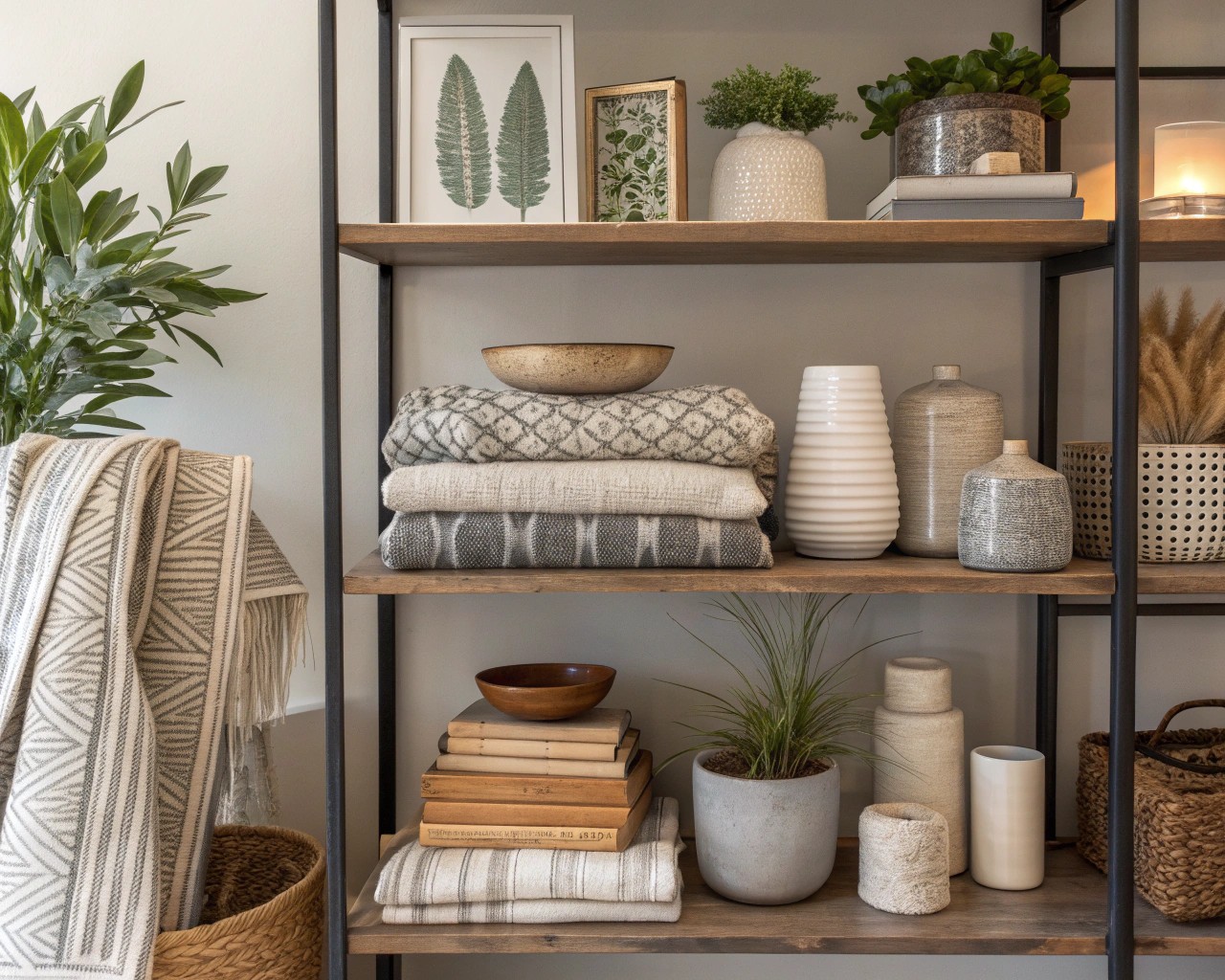
Natural materials bring warmth and authenticity to shelf displays. Wood, stone, ceramics, woven fibers, and metal each contribute unique textural qualities that prevent visual flatness. Combine smooth surfaces with rough textures, matte finishes with subtle sheens, and organic forms with geometric shapes.
The key lies in purposeful contrast—pairing a sleek ceramic vase with rough woven baskets, or positioning smooth river stones against textured tree bark. These juxtapositions create visual interest while maintaining overall harmony.
Lighting Considerations for Optimal Display
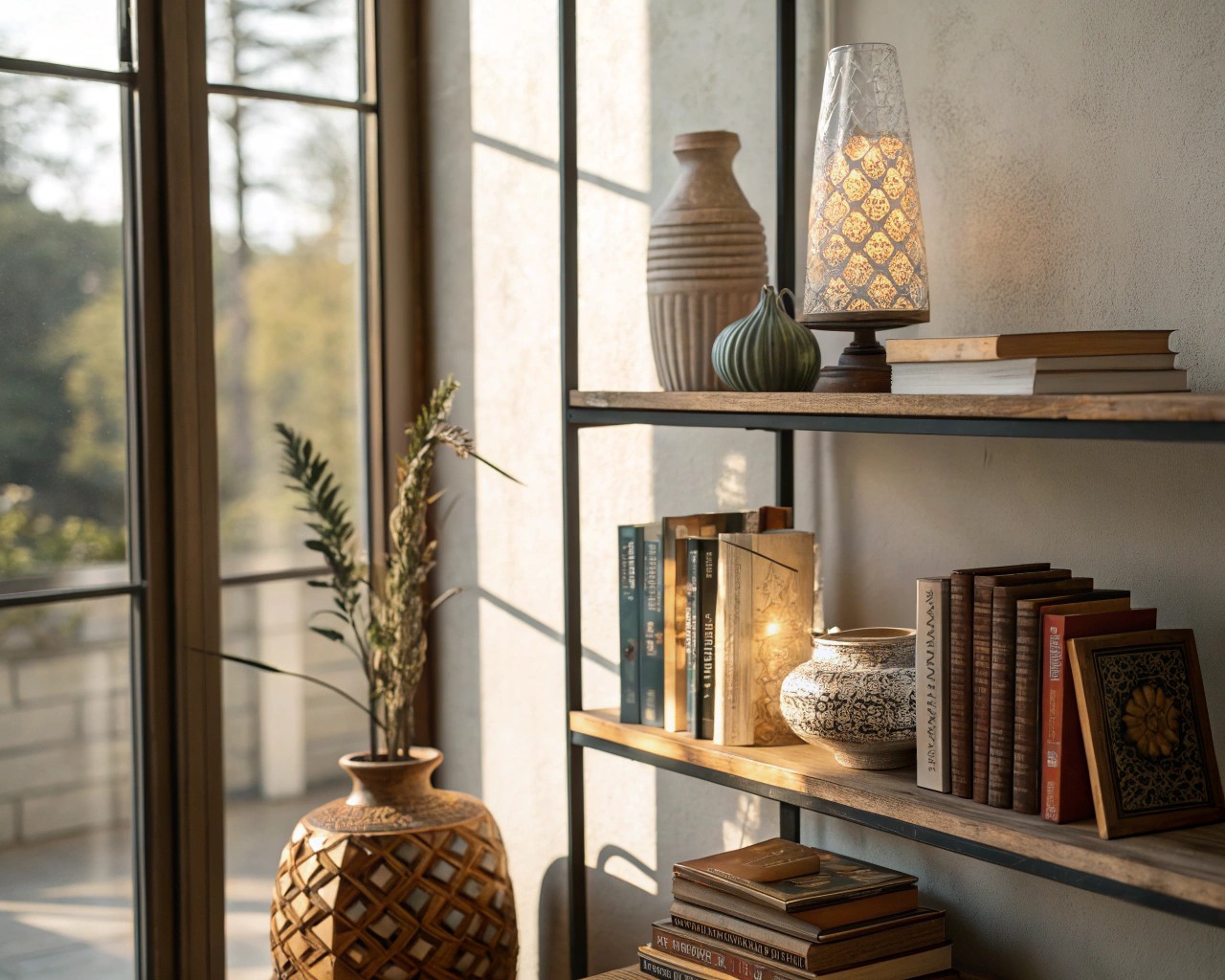
Proper lighting dramatically impacts how shelf arrangements appear and function. Most shelving exists in indirect light conditions, requiring strategic placement of both plants and decorative objects to accommodate these constraints.
Natural Light Optimization
Position shelves to maximize available daylight without creating glare or harsh shadows. Objects with reflective surfaces—mirrors, glass vessels, metallic accents—can help distribute light throughout deeper shelf areas. However, avoid placing these reflective elements where they might create uncomfortable glare in seating areas.
Light-hungry plants should occupy positions closest to windows or skylights, while more tolerant species can handle deeper shelf locations. Remember that light intensity decreases significantly with distance from windows, making plant selection crucial for arrangement success.
Supplemental Artificial Lighting
Consider adding LED strip lighting or small spotlights to illuminate deeper shelves. Warm white LEDs (2700-3000K) complement natural materials and create inviting ambiance without harsh shadows. Position lights to avoid direct glare while highlighting key display elements.
Practical Styling Formulas
Certain arrangements consistently produce pleasing results, providing reliable starting points for shelf styling projects.
The Books-and-Topper Method
Stack 2-3 horizontal books and place a decorative object on top—a small sculpture, candle, or plant. This formula adds instant height variation while creating stable platforms for delicate items.
Rule of Three Groupings
Arrange three objects of different heights, overlapping them slightly for depth. Choose items with varied textures, colors, or materials while maintaining visual connection through shared elements.
Layered Background Elements
Lean artwork, mirrors, or decorative plates against the back wall, then layer smaller objects in front. This technique creates depth while maximizing limited shelf space.
Maintenance and Evolution
Successful shelf styling requires ongoing attention and periodic refreshing. Plants need regular rotation and care, seasonal changes may call for different decorative elements, and your personal tastes will naturally evolve.
Quarterly assessment allows you to evaluate what’s working and what needs adjustment. Remove items that no longer serve the arrangement, add new pieces that enhance the overall composition, and reorganize elements that have become visually stagnant.
Remember that the most compelling shelf displays feel lived-in rather than precious. Allow books to be slightly askew, let plant vines grow naturally, and embrace the gentle imperfections that make spaces feel authentically yours.
The goal isn’t museum-perfect displays but rather thoughtfully curated arrangements that enhance daily life while reflecting personal style. When books, plants, and decorative objects work together harmoniously, they create focal points that bring lasting satisfaction to any living space.
(

